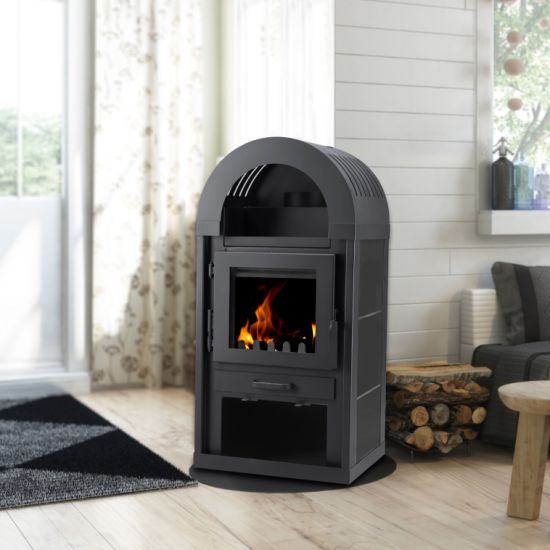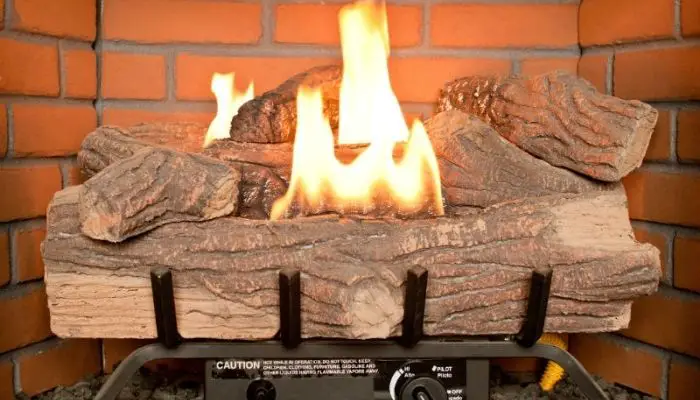When you see an image of wood-burning, what comes to your mind? The images are often associated with holidays, cozy nights, and romance. Despite that, wood smoke has been proven to be detrimental to our health.
There are also other emissions that come with a wood-burning fireplace. The most affected are those with cardiovascular diseases, children, and the old.
The most disturbing fact is that it is hard to realize you are taking in toxic chemicals. You will need to ensure your house has proper ventilation when using a wood-burning fireplace.
In this article, we will look at how our health would be affected and prevention methods.
Are Wood-Burning Fireplaces Healthy?
There are several potential health risks when you breathe in wood smoke from wood-burning fireplaces. This is because smoke contains small invisible particles that can easily get into your respiratory system or the eyes.
Who is at the biggest health risk when exposed to wood smoke? Before we look at the health concerns of wood smoke, let us look at the most vulnerable people. They include;
- People with heart or lung diseases
- People with Asthma
- Older people are more likely to be affected by smoke compared to younger people
- People with obesity or Diabetes
- Outdoor workers
- Children suffer a greater risk because;
- Their respiratory system is still developing
- They tend to be more active outside
- They breathe in more air per body weight compared to adults
So, what are some of the hazardous health risks of wood smoke? Some of the wood produce nice smelling smoke. That is a trap; do not fall for it. The small particles can get inside your body fast and without being noticed. As a result, the following can happen;
- Burning eyes
- Runny nose
- Wheezing and coughing
- Illnesses such as bronchitis
- Triggering of Asthma attacks
- Triggering of heart attacks, heart failure, and irregular heart rhythms.
- Strokes can also happen due to smoke
- Lung cancer is caused by wood smoke
Are Wood-Burning Fireplaces Good For The Environment?
In recent years, issues of environmental pollution have been at the forefront of many forums. Wood smoke has contributed to quite a percentage of this topic.
The traditional wood-burning fireplaces have been criticized for their toxic emissions. However, technologists have also tried to come up with solutions to these problems. A burning wood stove is one of the examples.
This does not mean wood stoves are 100% harmless to the environment. They reduce the amount of emissions compared to traditional wood-burning fireplaces. They also burn wood more efficiently, produce more heat, and use less wood. You have to use them properly to protect the environment
How Do You Protect Yourself From Wood Smoke
If you have a wood-burning fireplace running continuously, the air quality inside the house goes down. Also, emissions to the environment worsen the air quality outside. So, how would you make sure you are safe from the effects of smoke?
- Try burning well-seasoned, dry wood in your fireplace to reduce the amount of smoke
- Clean and inspect your chimney regularly to remove any creosote buildup.
- Make sure your room with the wood-burning fireplace is well-ventilated.
- Your fireplace should have a tight-fitting door instead of a screen.
- Newspaper and small pieces of firewood can help start a fire without much smoke
- Do not burn plastic, pressure-treated wood, or garbage in a fireplace
- You can also switch to better fuels like solar heaters to avoid the effects of wood smoke.
Useful Effects of Burning Wood
Since the invention of fire, we have been burning wood as a normal task. It will be very weird if a human being does not know how to light up a fire. Watching the fire flames dancing over the logs is so satisfying. This is one of the reasons we have indoor wood-burning fireplaces.
The type of wood affects the quality of fire in your place. For you to efficiently use your fireplace, please select well-dried wood. You can do more research on the type of wood that suits your fireplace. Let us take a look at some of the benefits of burning wood.
- Brings Self-sufficiency and Reduce Costs
You will never have to worry about power cuts if you are using a wood-burning fireplace. Yes, you are fully self-sufficient thus cannot get cold when there is a blackout. This suits people who live in rural areas with unreliable power supply.
Also, with wood, you know exactly how much you are spending. You cannot be surprised by wood bills because you track them. With electricity bills, they can get high depending on the weather outside and come as a surprise. If you run out of wood, the solution is to buy more wood. Such helps you budget on the fuel.
- Wood is Green
When you burn wood, you help conserve fossil fuels. Wood would be a waste material if left to rot on earth. So, burning wood would help clean the environment. Wood also produces much lower carbon dioxide compared to burning alternative fuels.
- Each Wood Fire is Unique
Each time you burn wood, you know it will produce a slightly different flame from the previous one. Different atmosphere conditions and chimney drafts bring out the difference in flames. This makes the fire flames more attractive. It will not be just a case of switching the fireplace on and off.
Conclusion
Wood-burning fireplaces have their benefits and drawbacks. You will enjoy the benefits while being cautious about the disadvantages. The good thing is you can protect yourself from the drawbacks of a wood-burning fireplace. Take the necessary precautions to protect your health. Remember to check on the quality of wood being used.


